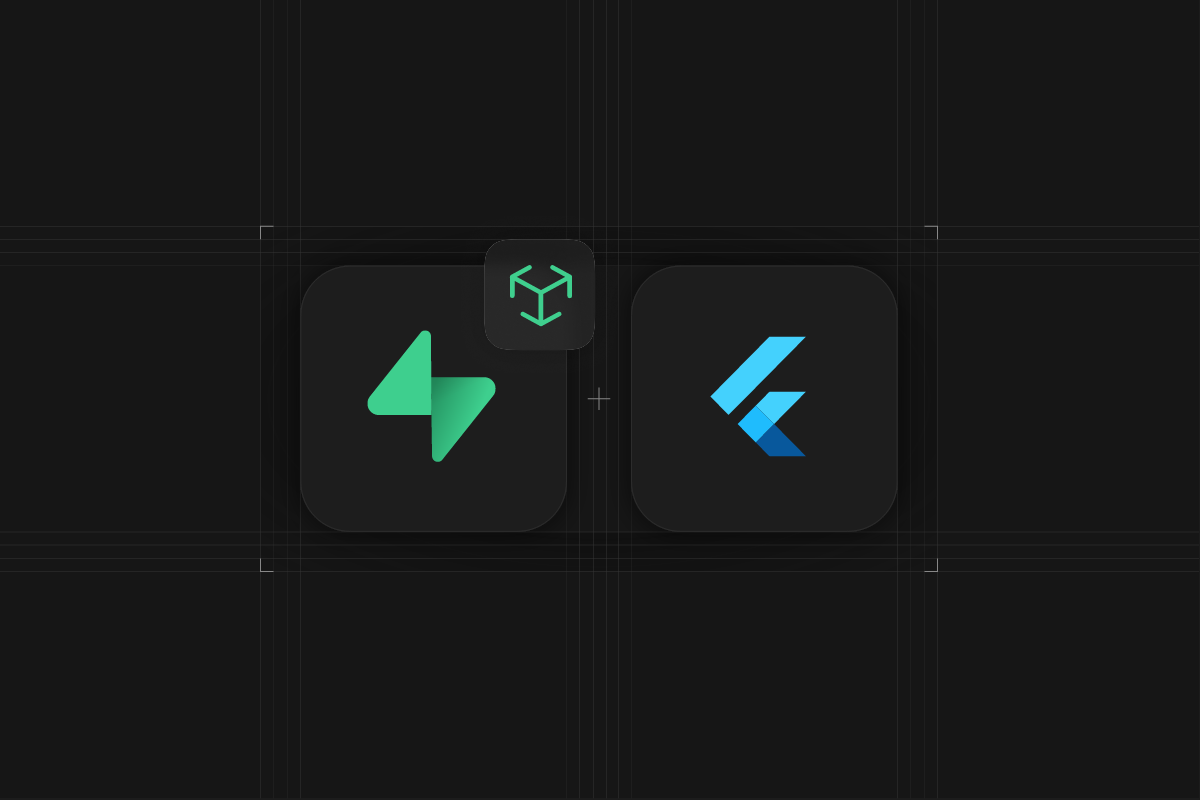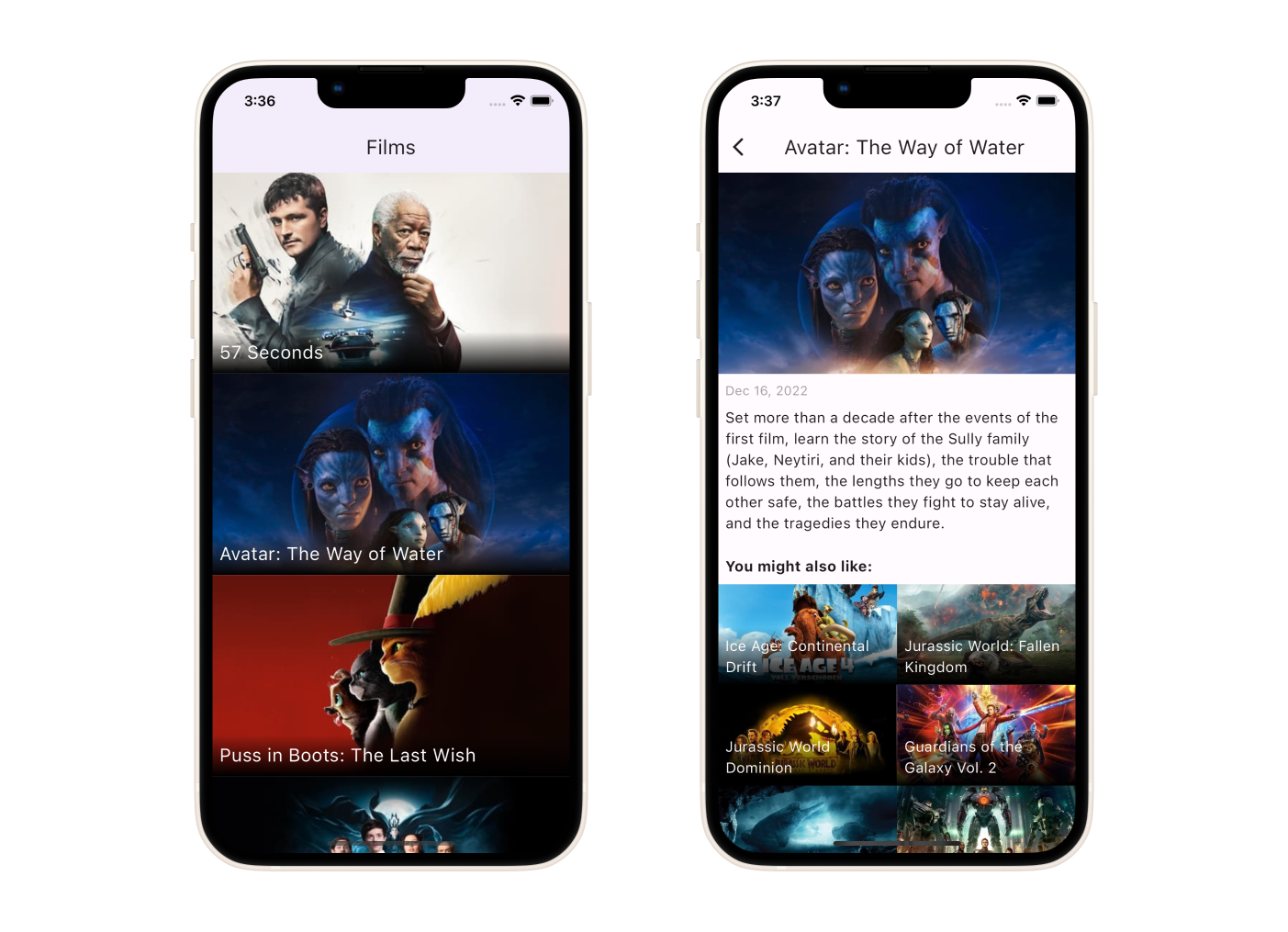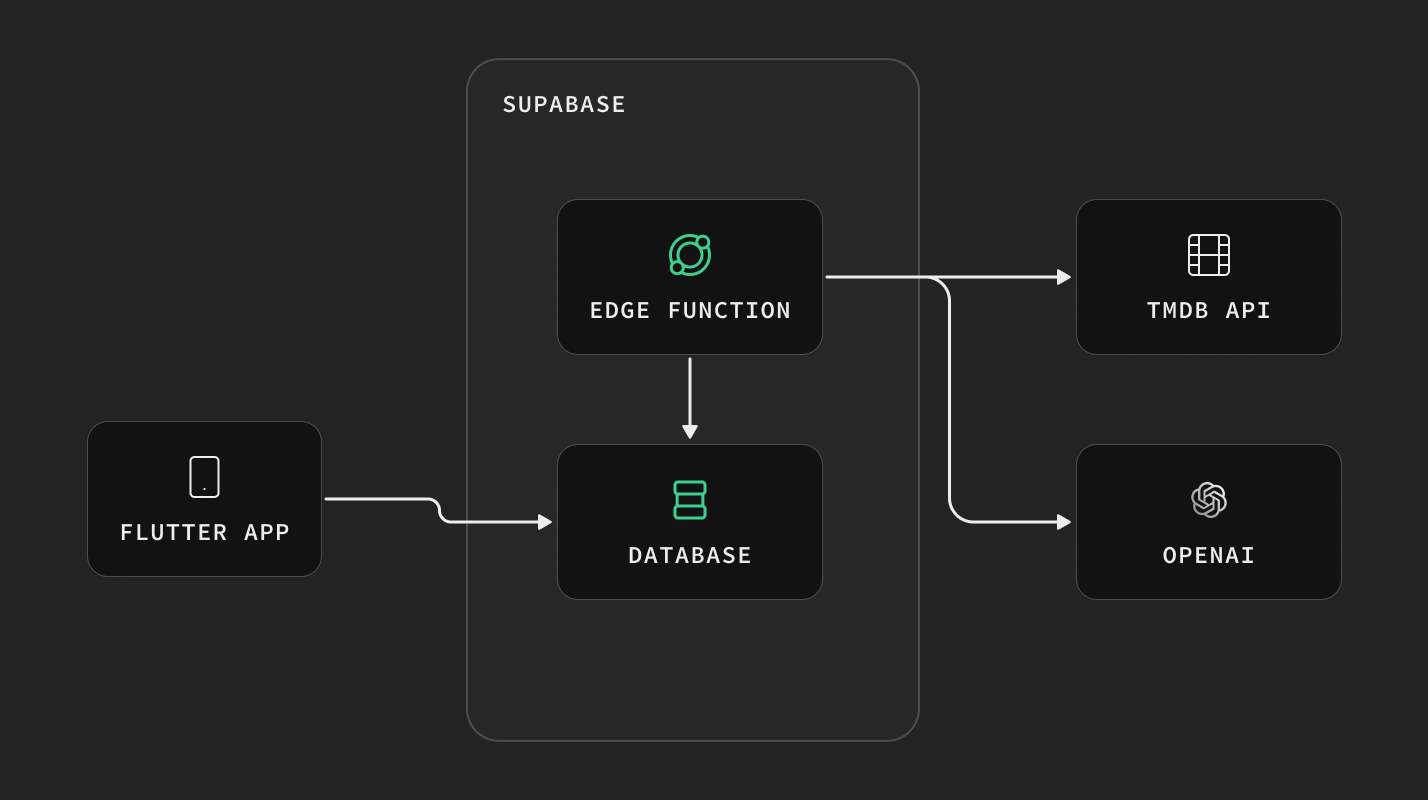
Recommending relevant content to the user is essential to keep the user interested in the app. Although it is a common feature that we would like to have in our apps, building it is not straightforward. This changed as vector databases and Open AI emerged. Today, we can perform semantic searches that are highly aware of the context of the content with just a single query into our vector database. In this article, we will go over how you can create a Flutter movie-viewing app that recommends another movie based on what the user is viewing.
A quick disclaimer, this article provides an overview of what you can build with a vector database, so it will not go into every detail of the implementation. You can find the full code base of the app in this article here to find more details.
Why use a vector database for recommending content
In machine learning, a process of converting a piece of content into a vector representation, called embeddings, is often used, because it allows us to analyze the semantic content mathematically. Assuming we have an engine that can create embeddings that are well aware of the context of the data, we can look at the distance between each embedding to see if the two content are similar or not. Open AI provides a well-trained model for converting text content into an embedding, so using it allows us to create a high-quality recommendation engine.
There are numerous choices for vector databases, but we will use Supabase as our vector database in this article, because we want to also store non-embedding data, and we want to be able to query them easily from our Flutter application.
What we will build
We will be building a movie listing app. Think Netflix except the users will not be able to actually view the movie. The purpose of this app is to demonstrate how to surface related content to keep the users engaged.
Tools/ technologies used
- Flutter - Used to create the interface of the app
- Supabase - Used to store embeddings as well as other movie data in the database
- Open AI API - Used to convert movie data into embeddings
- TMDB API - A free API to get movie data
Creating the app
We first need to populate the database with some data about movies and its embeddings. For that, we will use the Supabase edge functions to call the TMDB API and the Open AI API to get the movie data and generate the embeddings. Once we have the data, we will store them in Supabase database, and query them from our Flutter application.
Step 1: Create the table
We will have one table for this project, and it is the films table. films table will store some basic information about each movie like title or release data, as well as embedding of each movie’s overview so that we can perform vector similarity search on each other.
_20-- Enable pgvector extension_20create extension vector_20with_20 schema extensions;_20_20-- Create table_20create table public.films (_20 id integer primary key,_20 title text,_20 overview text,_20 release_date date,_20 backdrop_path text,_20 embedding vector(1536)_20);_20_20-- Enable row level security_20alter table public.films enable row level security;_20_20-- Create policy to allow anyone to read the films table_20create policy "Fils are public." on public.films for select using (true);
Step 2: Get movie data
Getting movie data is relatively straightforward. TMDB API provides an easy-to-use movies endpoint for querying information about movies while providing a wide range of filters to narrow down the query results.
We need a backend to securely call the API, and for that, we will use Supabase Edge Functions. Steps 2 through 4 will be constructing this edge function code, and the full code sample can be found here.
The following code will give us the top 20 most popular movies in a given year.
_32const searchParams = new URLSearchParams()_32searchParams.set('sort_by', 'popularity.desc')_32searchParams.set('page', '1')_32searchParams.set('language', 'en-US')_32searchParams.set('primary_release_year', `${year}`)_32searchParams.set('include_adult', 'false')_32searchParams.set('include_video', 'false')_32searchParams.set('region', 'US')_32searchParams.set('watch_region', 'US')_32searchParams.set('with_original_language', 'en')_32_32const tmdbResponse = await fetch(_32 `https://api.themoviedb.org/3/discover/movie?${searchParams.toString()}`,_32 {_32 method: 'GET',_32 headers: {_32 'Content-Type': 'application/json',_32 Authorization: `Bearer ${tmdbApiKey}`,_32 },_32 }_32)_32_32const tmdbJson = await tmdbResponse.json()_32_32const tmdbStatus = tmdbResponse.status_32if (!(200 <= tmdbStatus && tmdbStatus <= 299)) {_32 return returnError({_32 message: 'Error retrieving data from tmdb API',_32 })_32}_32_32const films = tmdbJson.results
Step 3: Generate embeddings
We can take the movie data from the previous step and generate embedding for each of them. Here, we are calling the Open AI Embeddings API to convert the overview of each movie into embeddings. overview contains the summary of each movie, and is a good source to create embedding representing each of the movies.
_20const response = await fetch('https://api.openai.com/v1/embeddings', {_20 method: 'POST',_20 headers: {_20 'Content-Type': 'application/json',_20 Authorization: `Bearer ${openAiApiKey}`,_20 },_20 body: JSON.stringify({_20 input: film.overview,_20 model: 'text-embedding-3-small',_20 }),_20})_20_20const responseData = await response.json()_20if (responseData.error) {_20 return returnError({_20 message: `Error obtaining Open API embedding: ${responseData.error.message}`,_20 })_20}_20_20const embedding = responseData.data[0].embedding
Step 4: Store the data in the Supabase database
Once we have the movie data as well as embedding data, we are left with the task of storing them. We can call the upsert() function on the Supabase client to easily store the data.
Again, I omitted a lot of code here for simplicity, but you can find the full edge functions code of step 2 through step 4 here.
_20// Code from Step 2_20// Get movie data and store them in `films` variable_20..._20_20for(const film of films) {_20 // Code from Step 3_20 // Get the embedding and store it in `embeddings` variable_20_20 filmsWithEmbeddings.push({_20 id: film.id,_20 title: film.title,_20 overview: film.overview,_20 release_date: film.release_date,_20 backdrop_path: film.backdrop_path,_20 embedding,_20 })_20}_20_20// Store each movies as well as their embeddings into Supabase database_20const { error } = await supabase.from('films').upsert(filmsWithEmbeddings)
Step 5: Create a database function to query similar movies
In order to perform a vector similarity search using Supabase, we need to create a database function. This database function will take an embedding and a film_id as its argument. The embedding argument will be the embedding to search through the database for similar movies, and the film_id will be used to filter out the same movie that is being queried.
Additionally, we will set an HSNW index on the embedding column to run the queries efficiently even with large data sets.
_14-- Set index on embedding column_14create index on films using hnsw (embedding vector_cosine_ops);_14_14-- Create function to find related films_14create or replace function get_related_film(embedding vector(1536), film_id integer)_14returns setof films_14language sql_14as $$_14 select *_14 from films_14 where id != film_id_14 order by films.embedding <=> get_related_film.embedding_14 limit 6;_14$$ security invoker;
Step 6: Create the Flutter interface
Now that we have the backend ready, all we need to do is create an interface to display and query the data from. Since the main focus of this article is to demonstrate similarity search using vectors, I will not go into all the details of the Flutter implementations, but you can find the full code base here.
Our app will have the following pages:
- HomePage: entry point of the app, and displays a list of movies
- DetailsPage: displays the details of a movie as well as its related movies
_10lib/_10├── components/_10│ └── film_cell.dart # Component displaying a single movie._10├── models/_10│ └── film.dart # A data model representing a single movie._10├── pages/_10│ ├── details_page.dart # A page to display the details of a movie and other recommended movies._10│ └── home_page.dart # A page to display a list of movies._10└── main.dart
components/film_cell.dart is a shared component to display a tappable cell for the home and details page. models/film.dart contains the data model representing a single movie.
The two pages look like the following. The magic is happening at the bottom of the details page in the section labeled You might also like:. We are performing a vector similarity search to get a list of similar movies to the selected one using the database function we implemented earlier.
The following is the code for the home page. It’s a simple ListView with a standard select query from our films table. Nothing special going on here.
_48import 'package:filmsearch/components/film_cell.dart';_48import 'package:filmsearch/main.dart';_48import 'package:filmsearch/models/film.dart';_48_48import 'package:flutter/material.dart';_48_48class HomePage extends StatefulWidget {_48 const HomePage({super.key});_48_48 @override_48 State<HomePage> createState() => _HomePageState();_48}_48_48class _HomePageState extends State<HomePage> {_48 final filmsFuture = supabase_48 .from('films')_48 .select<List<Map<String, dynamic>>>()_48 .withConverter<List<Film>>((data) => data.map(Film.fromJson).toList());_48_48 @override_48 Widget build(BuildContext context) {_48 return Scaffold(_48 appBar: AppBar(_48 title: const Text('Films'),_48 ),_48 body: FutureBuilder(_48 future: filmsFuture,_48 builder: (context, snapshot) {_48 if (snapshot.hasError) {_48 return Center(_48 child: Text(snapshot.error.toString()),_48 );_48 }_48 if (!snapshot.hasData) {_48 return const Center(child: CircularProgressIndicator());_48 }_48 final films = snapshot.data!;_48 return ListView.builder(_48 itemBuilder: (context, index) {_48 final film = films[index];_48 return FilmCell(film: film);_48 },_48 itemCount: films.length,_48 );_48 }),_48 );_48 }_48}
In the details page, we are calling the get_related_film database function created in step 5 to get the top 6 most related movies and display them.
_106import 'package:filmsearch/components/film_cell.dart';_106import 'package:filmsearch/main.dart';_106import 'package:filmsearch/models/film.dart';_106import 'package:flutter/material.dart';_106import 'package:intl/intl.dart';_106_106class DetailsPage extends StatefulWidget {_106 const DetailsPage({super.key, required this.film});_106_106 final Film film;_106_106 @override_106 State<DetailsPage> createState() => _DetailsPageState();_106}_106_106class _DetailsPageState extends State<DetailsPage> {_106 late final Future<List<Film>> relatedFilmsFuture;_106_106 @override_106 void initState() {_106 super.initState();_106_106 // Create a future that calls the get_related_film function to query_106 // related movies._106 relatedFilmsFuture = supabase.rpc('get_related_film', params: {_106 'embedding': widget.film.embedding,_106 'film_id': widget.film.id,_106 }).withConverter<List<Film>>((data) =>_106 List<Map<String, dynamic>>.from(data).map(Film.fromJson).toList());_106 }_106_106 @override_106 Widget build(BuildContext context) {_106 return Scaffold(_106 appBar: AppBar(_106 title: Text(widget.film.title),_106 ),_106 body: ListView(_106 children: [_106 Hero(_106 tag: widget.film.imageUrl,_106 child: Image.network(widget.film.imageUrl),_106 ),_106 Padding(_106 padding: const EdgeInsets.all(8.0),_106 child: Column(_106 crossAxisAlignment: CrossAxisAlignment.stretch,_106 children: [_106 Text(_106 DateFormat.yMMMd().format(widget.film.releaseDate),_106 style: const TextStyle(color: Colors.grey),_106 ),_106 const SizedBox(height: 8),_106 Text(_106 widget.film.overview,_106 style: const TextStyle(fontSize: 16),_106 ),_106 const SizedBox(height: 24),_106 const Text(_106 'You might also like:',_106 style: TextStyle(_106 fontSize: 16,_106 fontWeight: FontWeight.bold,_106 ),_106 ),_106 ],_106 ),_106 ),_106 // Display the list of related movies_106 FutureBuilder<List<Film>>(_106 future: relatedFilmsFuture,_106 builder: (context, snapshot) {_106 if (snapshot.hasError) {_106 return Center(_106 child: Text(snapshot.error.toString()),_106 );_106 }_106 if (!snapshot.hasData) {_106 return const Center(child: CircularProgressIndicator());_106 }_106 final films = snapshot.data!;_106 return Wrap(_106 children: films_106 .map((film) => InkWell(_106 onTap: () {_106 Navigator.of(context).push(MaterialPageRoute(_106 builder: (context) =>_106 DetailsPage(film: film)));_106 },_106 child: FractionallySizedBox(_106 widthFactor: 0.5,_106 child: FilmCell(_106 film: film,_106 isHeroEnabled: false,_106 fontSize: 16,_106 ),_106 ),_106 ))_106 .toList(),_106 );_106 }),_106 ],_106 ),_106 );_106 }_106}
And that is it. We now have a functioning similarity recommendation system powered by Open AI built into our Flutter app. The context used today was movies, but you can easily image that the same concept can be applied to other types of content as well.
Afterthoughts
In this article, we looked at how we could take a single movie, and recommend a list of movies that are similar to the selected movie. This works well, but we only have a single sample to get the similarity from. What if we want to recommend a list of movies to watch based on say the past 10 movies that a user watched? There are multiple ways you could go about solving problems like this, and I hope reading through this article got your intellectual curiosity going to solve problems like this.

